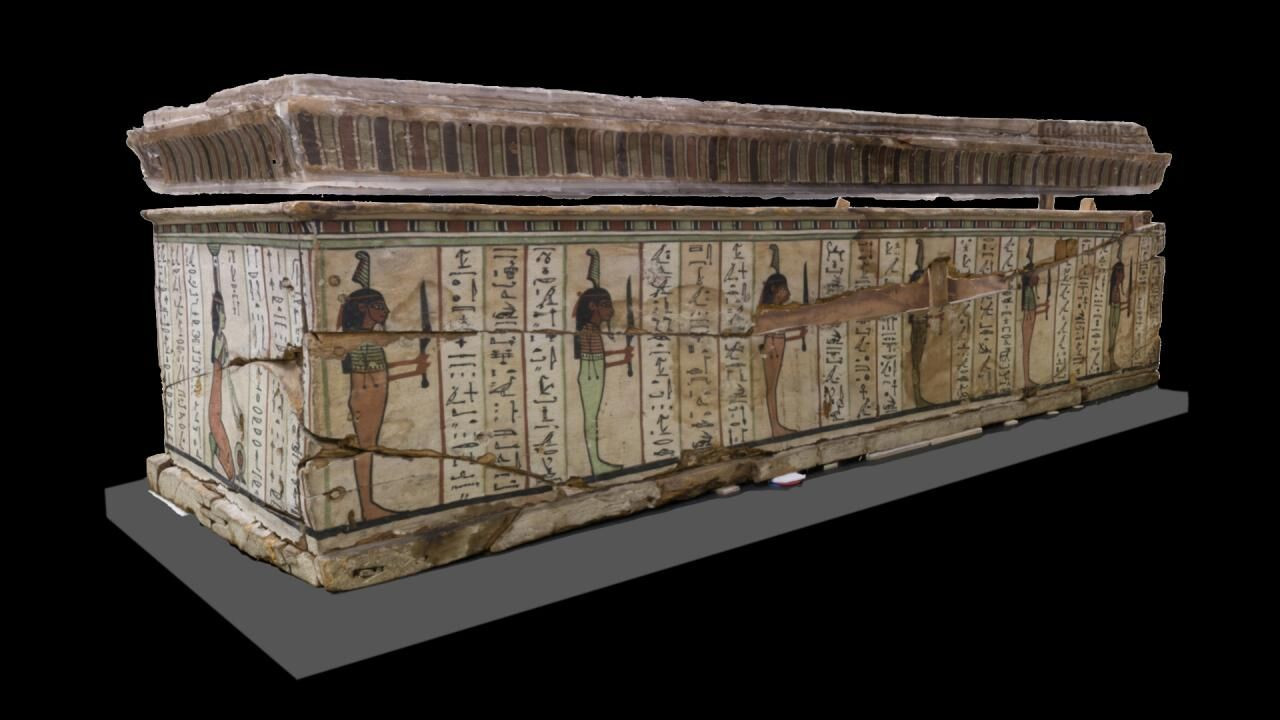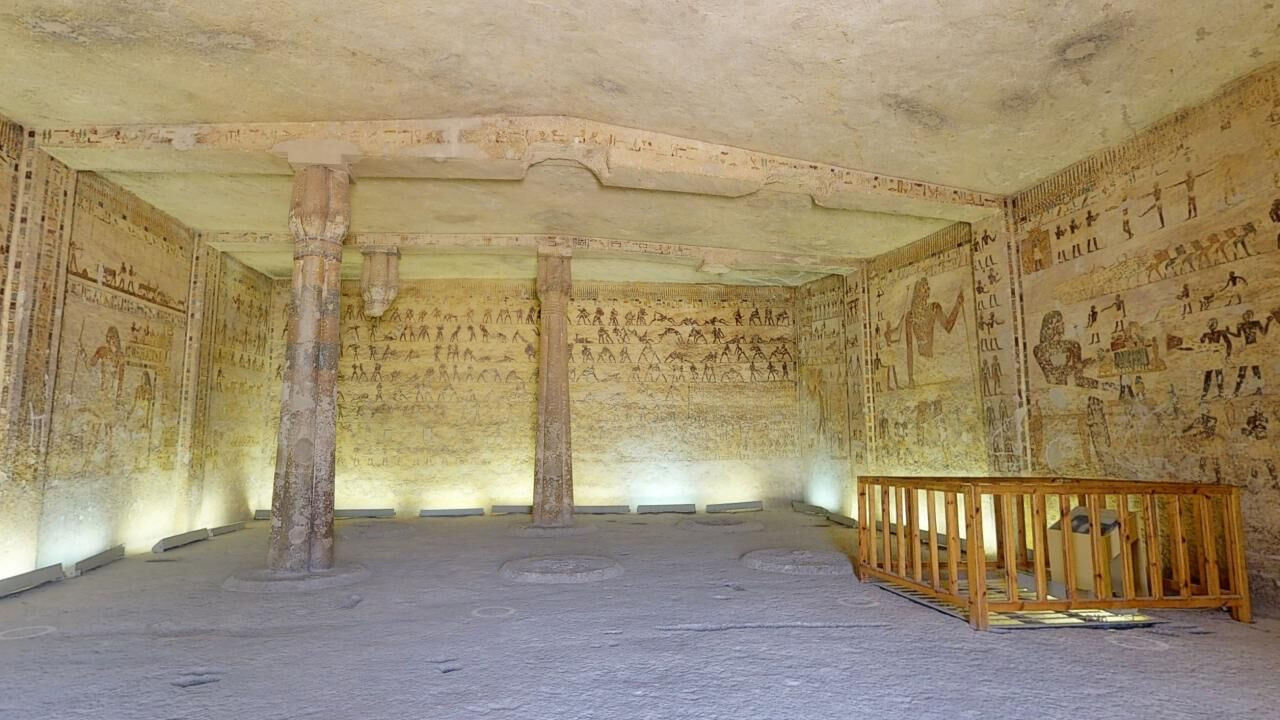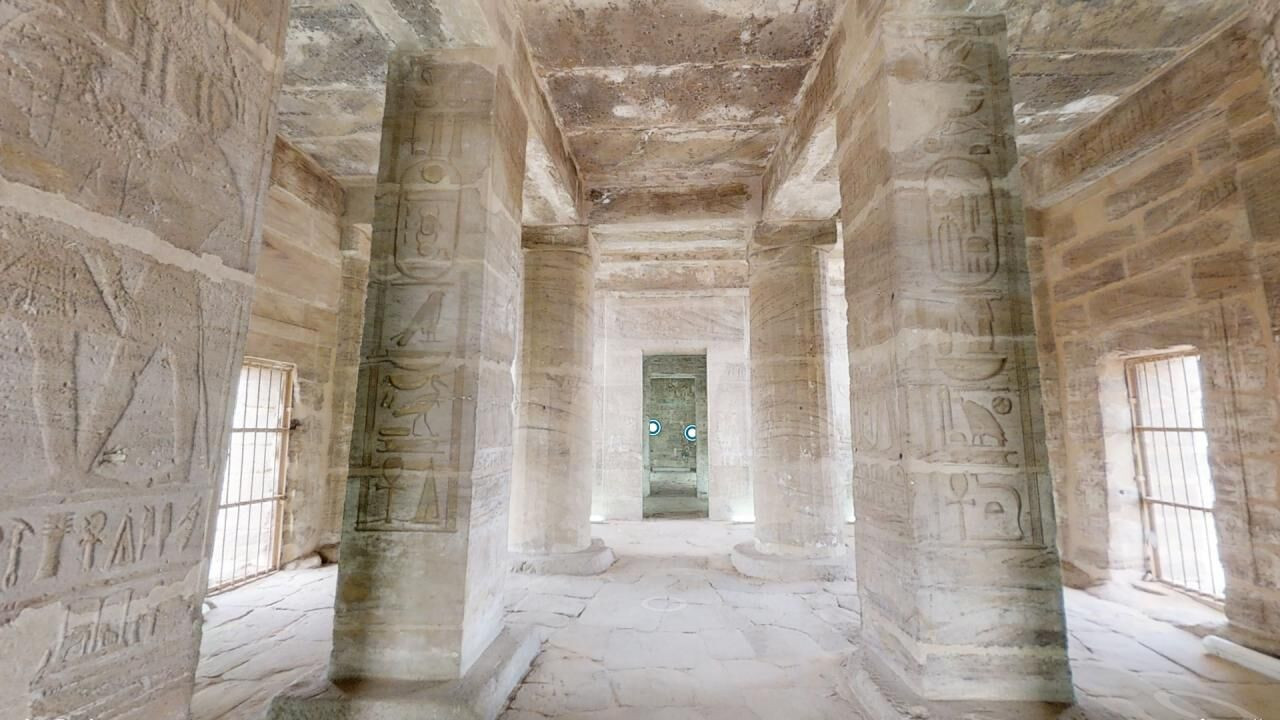Walking through the tomb of Nefertari today and in the past
Created by Andrey Plaksin (Scionik)
Created by Andrey Plaksin (Scionik)
The tomb of Queen Nefertari, the wife of Ramses II, is among the most beautiful monuments one can visit on the west bank of Luxor, Egypt. The tomb (QV66) is located in the main wadi of the Valley of the Queens and was discovered by Ernesto Schiaparelli (the director of the Egyptian Museum in Turin) in 1904. The tomb was plundered in antiquity and was badly damaged due mostly to natural causes (earthquakes, water damage etc.). Since its discovery, the tomb has been opened and closed to the public numerous times. In the 1950s it was closed in order to repair the severe problems that threatened the painted walls. However, it was not until 1986 that a serious restoration work was undertaken by the Getty Conservation Institute, with the actual restoration work begun in 1988 and completed in April 1992. The tomb was reopened to the public in 1995, and since then the admission has been strictly restricted.
The tomb of Nefertari is the largest and most lavishly decorated monument in the Valley of the Queens. It is entered through a flight of steps and consists of seven chambers and a secondary staircase. The tomb's roughly south-north axis is not straight but turns eastwards at the descent to the lower chambers. Three chambers are located on the upper level, while the burial chamber and its three annexes are reached via the second staircase. The antechamber has a bench structure on its north and west sides onto which offerings were placed. Four pillars divide the burial chamber into three sections, with the central one, where the queen's pink granite sarcophagus originally lay, being on a somewhat lower level than the other two. The remains of the lid are now in the Turin museum.
The walls of the tomb contain exquisitely painted scenes of the queen’s journey through the underworld from the Book of the Dead, as well as images of the gods who welcome her. The ceilings were painted deep blue with a myriad of yellow stars, representing the heavens. (You can read a more detailed description of the tomb’s decoration here.)
The 3D documentation of QV66 was undertaken between 2015 and 2020 by Andrey Plaksin. The first of the two Sketchfab models below is a presentation of the tomb of Nefertari as it exists today, while the second is a tentative reconstruction of the tomb as it might have looked upon completion, with reconstructed wall paintings, lights and deposited grave goods. For more information on the project, visit the site The Tomb of Nefertari.
The Tomb of Nefertari in its current condition (Sketchfab model created by Andrey Plaksin)





